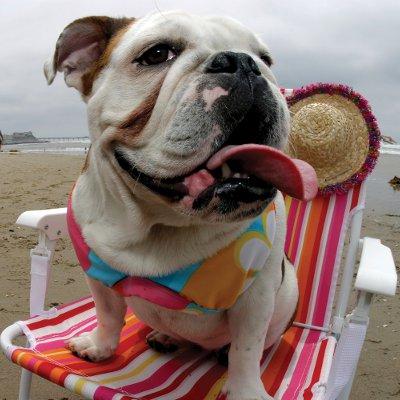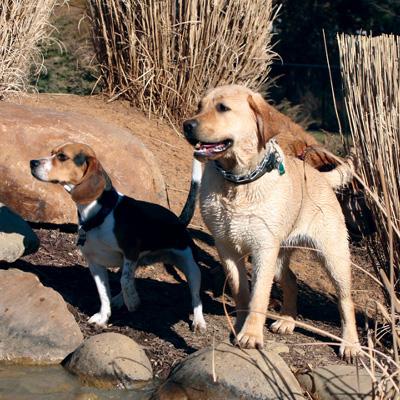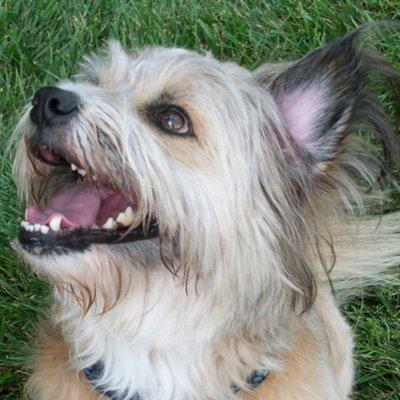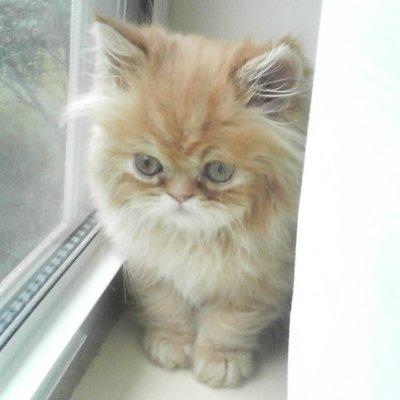
March 1, 2016
PetSafe® Expert
Stacy N. Hackett
Breed All About It: Himalayans & Persians
Persian - Lovable Personality with Smush Faces
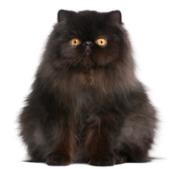
Year after year, the Persian tops the list of the most popular cat breeds. Why? This cat's adorable face, combined with her lovely long hair and sweet, mild personality, create an irresistible feline package that makes many people fall in love immediately.
The Persian's ancestors also inspired love at first sight. As the breed's name implies, the earliest Persians traveled as pampered pets in caravans across the deserts of what is known today as Iran. Some of these longhaired beauties were brought to England as early as the 1600s, and in the 19th century, cat fanciers in England began selectively breeding the cats to achieve the distinctive look the breed possesses today.
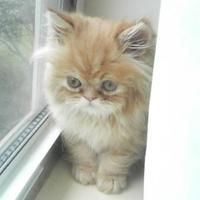
Chief among the distinct features is the Persian's "peke" or "pansy" face, characterized by a snub nose and large, round eyes peering out of a round face with a round chin. The cat's short, cobby body and short legs are well-muscled, leading some to describe her as "powerful" and "massive."
Flowing over this muscular body is the Persian's signature fur. Starting with the cat's luxurious ruff, the coat flows over the body, ending in a thick plume at the tail. And the colors! The Persian comes in almost every color and pattern imaginable, from the striking (and popular) solid white to calico, bicolor to silver shaded, tabby to tortoiseshell. And that's just the tip of the patterned iceberg!
And though the beautiful coat may look like it involves a lot of work, breeders say a regular grooming routine does not have to be difficult. In fact, combing your Persian's fur a few times each week keeps the coat in good shape and gives you a chance to bond more closely with the quietly sociable cat. If you want the Persian look without as much brushing, shedding, and hairballs, the Exotic Shorthair is another breed to consider.
Described by many as a lap cat, the Persian seems to enjoy nothing as much as snuggling with its family members. The cat's gentle, loving nature makes her an ideal companion for families of all types--as long as they are willing to pay regular attention to her coat.
Himalayan - Persian Looks, Siamese Brains
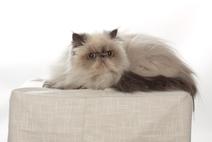
At first glance the Himalayan, or "Himmie," may look just like a Persian, but look past his smooshed "pansy" face and his long flowing hair to his brilliant blue eyes and pointed coat. This sweet cat has just enough Siamese in his background to make him just a bit different from his Persian cousin.
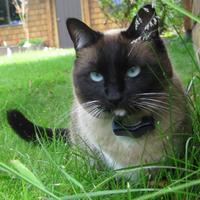
While the Persian lent the Himalayan most of his physical characteristics--including the solid, cobby body type, sweet "peke" face and luxurious fur--the touches of Siamese in the breed are difficult to overlook. The distinctive blue eyes are pure Siamese, as are the dark patches of fur on the cat's face, ears, tail and paws. Called "points," these patches of color come in a rainbow of hues for the Himalayan breed. The four traditional colors--seal, blue, chocolate and lilac--are joined by flame, tortie, blue-cream, cream and a range of combinations of those colors with "lynx" point, which indicates the addition of the agouti tabby gene to the base color (in other words, the darker "pointed" areas appear to have a tabby pattern).
You don't have to put in much time every day to keep the Himalayan's beautiful pointed coat looking its best. Breeders compare the daily chore to that of brushing your own teeth--regular combing every day for just a few minutes will keep the fur in top shape. The Himalayan enjoys grooming time (doesn't everyone love a little pampering?). In fact, the playful cat loves any time spent with his family members.
And while the Himalayan shares the sweet, loyal personality of his Persian cousin, he enjoys a bit of a playful streak that he inherited from his Siamese ancestors. The combination of sweet and playful makes the Himalayan an ideal cat for families with children, though the breed gets along well with people and pets of all ages.
Just don't expect the Himalayan to enjoy being alone for long stretches of time without any type of companion, human or otherwise. Breeders say that this cat needs interaction and can become depressed without regular socializing.
Get Email Updates
Subscribe to the latest news, promotions, & more from PetSafe® brand.
Sign up today for the latest news, promotions, and more from PetSafe® brand.


